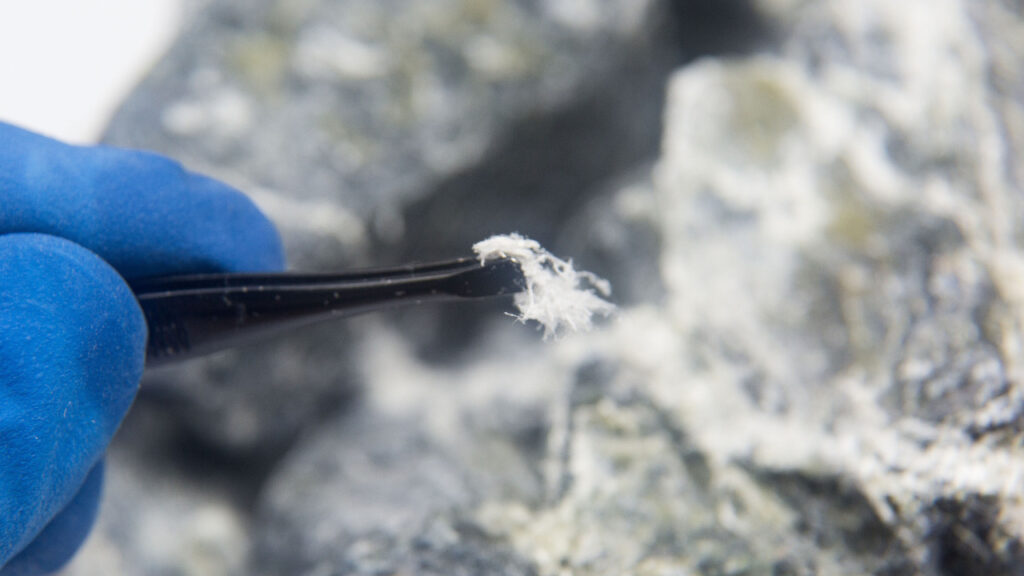Have you just found your dream house and are going to purchase it?
But hold on.
Before you complete the purchase, be mindful that buying a house is not only about planning finances. It also includes avoiding potential money pits such as plumbing defaults, structural problems, electricity wiring troubles, and don’t forget asbestos in popcorn ceilings.
The chances of asbestos presence are even higher if you buy a house constructed between 1950-1990. It makes asbestos assessment an important part of any pre-purchase inspection if popcorn ceilings are there.
Asbestos presence is a cause of concern for many homeowners due to its harmful effect on human health. It was extensively used in popcorn ceilings before it was completely banned in the mid-90s.
Let’s find some more facts about the presence of asbestos in the popcorn ceilings.
Table of Contents
Asbestos in Popcorn Ceilings – Is It Worth the Hype?
When was asbestos used in popcorn ceilings? This particular kind of ceiling found its way into mainstream construction during the mid-twentieth century, especially the 1950s-1980s. Popcorn ceiling asbestos was preferred over a plain ceiling due to its many purposes.
Here’s how popcorn ceiling asbestos was created:
- Popcorn ceilings were created by using spray-on-texturing techniques.
- The spray mixture was created using a drywall compound (which is a mixture of gypsum and water, with or without some additives), polystyrene or vermiculite particles (to create the popcorn analogy), and some fibers (such as asbestos fibers).
- A desired surface color could also be imparted by using certain additives.
However, these ceilings posed severe health concerns as these were investigated and researched. Ceiling sprays that comprised asbestos fibers were found to be very risky for human health.

In the mid-1970s, it was investigated that asbestos fibers increase the risk of respiratory problems, including cancer.
Although the prime objective of adding asbestos fibers was to augment the ceiling’s fire resistance and durability; it was found that particles from these fibers remained in the air and were likely to enter the respiratory organs when inhaled.
Also, there was no safe limit of exposure to asbestos which led to its partial and complete ban by the Environmental Protection Agency (EPA). After this, asbestos was replaced with chemicals, but the ceiling built during the time still had asbestos contamination.
Do All Popcorn Ceilings Have Asbestos?
As mentioned above, the use of asbestos in popcorn ceilings was more in fashion during the 1950s-70s. However, you must understand that asbestos use wasn’t exclusive to this period.
The new house you have your eyes on may contain asbestos in the ceiling as the builders continued using asbestos-containing materials beyond the 1970s.
Do popcorn ceilings have asbestos? To find out the answer, you should consider the following factors while buying a house:
Age of the Ceiling
The age of the building can give you a rough indication of the presence of asbestos. If the house was constructed or renovated during the period of peak asbestos use, there’s a high chance you have ended up with an asbestos ceiling.
Building History
Do a thorough research on the building’s construction history. If you get access to the renovation records, you can have valuable information about the materials used during construction.
Laboratory Testing
If you are not 100% sure and want certainty, the most reliable thing to do is to get a sample of the ceiling and test it by a certified asbestos testing laboratory.
Professional Inspection
You can also hire a professional to take a look at your popcorn ceiling. An inspector can take samples professionally and give his expert opinion and guidance.
Effects of Asbestos on Human Health
Recent research has unveiled the fact that asbestos is related to an increased risk of respiratory illnesses and can be correlated with health concerns, particularly respiratory disorders.
So, yes, a popcorn ceiling having asbestos is not safe, particularly when the particles become airborne and are inhaled.
Increased Risk for Respiratory Disease
When this happens, the asbestos particles get free and remain suspended in the air, waiting for someone to take them into their breath and down their respiratory tract.
If this exposure is a one-time experience, you might not feel sick. However prolonged inhalation of microscopic asbestos particles can be dangerous as it increases the risk of cancer. be deadly for human health.
However, it is important to know that the asbestos particles become airborne only when they are disturbed or agitated. The chances of popcorn ceiling disturbance become high during repair and This is usually done during renovation or while cleaning the popcorn ceiling (such as nailing in the ceiling), natural disasters, or some environmental wear and tear.
Test the Popcorn Ceilings for Asbestos
Visual inspection alone cannot be a definitive test to check if your popcorn ceiling has asbestos. This is because asbestos fibers are microscopic and are hard to identify without a laboratory test.
Step 1: Collect Ceiling Samples
For the asbestos test, you need to collect the ceiling sample. The samples can be collected from different ceilings.
Step 2: Use Protective Gear
When collecting samples, make sure to use gloves and masks to eliminate your chances of risk exposure. Otherwise, you can call experts for sample collection.
Step 3: Send Samples for Test
After sample collection make sure to pack them in different zipper bags and send them to the qualified laboratory.
These samples are tested in the laboratory using different microscopic techniques and you get the results.
Overcoming the Problem of Asbestos in Popcorn Ceilings
Once you get to know that the popcorn ceiling contains asbestos, it’s time to take immediate action. There are two common solutions for this. You can go for popcorn ceiling removal or can cover it. Both these methods have their pros and cons.
Removal of Ceiling
Popcorn ceiling removal is the most recommended solution as it eliminates asbestos from your homes. You can either go for ceiling removal via scraping or without scraping. Ceiling removal can be a difficult task so you can hire a removal expert for the safe removal of the ceiling.
Covering the Ceiling
If you don’t want to get the ceiling removed, the other option is to cover the ceiling. For this, you can use tiles, paint, cloth cover, or other options. However, covering the ceiling isn’t recommended especially if there are signs of damage.
Other Methods to Control Asbestos Exposure
Some of the other ways to control asbestos exposure include:
- Don’t disturb the popcorn ceiling and avoid scraping it.
- Avoid dry cleaning and only use dry cleaning brushes.
- Don’t eat or drink anything in the room where there is a possibility of exposure.
- Wear personal protection gear when you are working with the ceilings.
- Don’t wear those clothes outside the worksite to minimize the chances of passive exposure.
Ensure the Safety of Living Spaces
Popcorn ceilings do exist today but the asbestos fibers are replaced with paper fiber. However, their prevalence has decreased over the years. Homeowners have switched to other ceiling types that suit modern trends and complement the house’s interior.
Modern construction and renovation trends prefer going for a smooth or lightly textured ceiling surface that can also be given any color of your choice.





